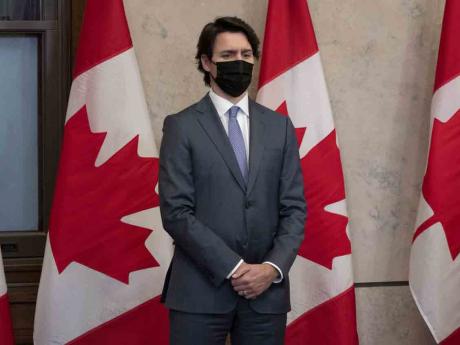The 25th Amendment was ratified in 1967, and it provides a mechanism for the Vice President and a majority of the Cabinet to declare that the President is “unable to discharge the powers and duties of his office.” If this happens, then the Vice President becomes Acting President until such time as the President is able to resume his duties. The amendment also allows Congress to pass a resolution declaring that the President is unable to serve, which would require a two-thirds vote in both houses of Congress.
The 25th Amendment has been invoked only once before, when President Ronald Reagan underwent surgery in 1985 and temporarily transferred power to Vice President George H.W. Bush. However, there have been calls from some quarters for its use in recent days due to concerns about Donald Trump’s mental state following his incitement of an insurrection at the U.S. Capitol on January 6th.
At this point, however, it appears unlikely that the 25th Amendment will be invoked against Trump before he leaves office on January 20th. While some members of Trump’s Cabinet have reportedly discussed invoking it, they are likely wary of setting a precedent that could be used against future presidents who are deemed unfit for office by their political opponents. Moreover, even if they were willing to do so, Vice President Mike Pence has indicated that he does not support using the amendment against Trump at this time.
The Westminster system is based on the principle of parliamentary sovereignty, which means that the government is accountable to parliament and must abide by its decisions. This means that if a rogue prime minister were to refuse to accept the results of an election or ignore the will of parliament, they could be removed from office through a vote of no confidence. However, this would require a majority of MPs in the House of Commons to agree to it, which may not always be possible.
In addition, there are other measures that can be taken in order to remove a rogue prime minister from office. The Governor General (or their representative) has the power to dissolve parliament and call for new elections if they feel that the current government is not acting in accordance with the constitution. The Queen also has the power to dismiss a prime minister if they are deemed unfit for office. Finally, if all else fails, Canada’s Supreme Court can intervene and declare any actions taken by a rogue prime minister as unconstitutional and therefore null and void.
Ultimately, while Canada’s Westminster system does have some safeguards in place against rogue prime ministers, it is far from foolproof. If such an event were ever to occur, it would require swift action from both elected officials and members of the judiciary in order to ensure that democracy is upheld and respected.
It also provides a mechanism for the president to temporarily transfer power to the vice-president if he or she is unable to fulfill their duties.
“The prime minister is the head of government and the governor general is the head of state.â€
However, it is highly unlikely that Governor General Julie Payette would appoint Ryan Reynolds as Prime Minister of Canada. The Governor General typically follows the advice of the outgoing Prime Minister and appoints a member of their party to take over. In this case, Chrystia Freeland is the Deputy Prime Minister and leader of the Liberal Party, so she would be the most likely candidate for the job.
The defeated leader will usually make a speech thanking their supporters and wishing the incoming government well. This is followed by a meeting between the outgoing and incoming prime ministers, where they discuss the transition of power. The outgoing prime minister will then hand over the keys to 24 Sussex Drive, as well as any other relevant documents or information that may be needed.
In some cases, such as when Jean Chretien stepped down in 2003, the defeated leader has stayed on in an advisory role for a period of time to help with the transition. This is not always necessary, however, and it is up to the discretion of both parties involved.
In Canada, transitions of power are generally peaceful and orderly affairs. This is due in part to our parliamentary system of government which allows for a smooth transfer of power from one party to another without any major disruptions or conflicts. It also helps that our political culture values civility and respect between opposing sides. As long as all parties involved remain respectful and cooperative during transitions of power, Canada can continue to enjoy peaceful transfers of authority from one government to another.
The Governor General has the power to appoint a new Prime Minister if the current one is unable or unwilling to resign. This power is derived from the Royal Prerogative, which gives the Governor General the authority to act on behalf of the Crown in matters of state. The Governor General can also dismiss a Prime Minister if they are found to be acting against the interests of Canada or its people.
The Governor General has the power to remove a Prime Minister who is governing unconstitutionally. This power is unique to Canada, as the head of government and the head of state are separate entities. The Governor General can act as a check on the Prime Minister’s power, ensuring that they remain within constitutional bounds. This has never happened in Canada before, but it is an important safeguard against abuse of power.
In such a situation, the only way to remove a prime minister from power would be for the country’s head of state (usually a president or monarch) to invoke their constitutional powers and dismiss the prime minister. This is an extreme measure that has rarely been used in modern democracies, but it is possible.
In some countries, such as France, the president can also dissolve parliament and call for new elections if they believe that the current government is no longer able to effectively govern. This could be used as an indirect way of removing a prime minister who refuses to step down.
Finally, if all else fails, citizens may resort to civil disobedience and mass protests in order to pressure their government into taking action against a rogue leader.
. The Prime Minister is the head of government and the Governor General is the representative of the Monarch, so if they were working together it would be a violation of our democratic system. This could lead to a breakdown in trust between citizens and their elected officials, as well as a lack of accountability for those in power. It could also lead to an erosion of civil liberties and human rights, as well as an increase in corruption and abuse of power.
In this case, the Governor General would be in a position to act as an enabler for the prime minister’s unconstitutional actions. The Governor General could refuse to dissolve Parliament or sign any bills that are contrary to the constitution, and could even grant pardons for any illegal acts committed by the prime minister. This would make it much more difficult for anyone to challenge the prime minister’s actions in court, as they would have to go through the Governor General first.
The public service could push back by refusing to carry out the orders of the Prime Minister, or by publicly expressing their disagreement with the Prime Minister’s decisions. They could also organize protests and rallies to demonstrate their opposition to the Prime Minister’s actions. Additionally, they could use their influence in the media to draw attention to the issue and pressure the Prime Minister into resigning or calling an election.
The Queen is the head of state in the UK and has the power to dissolve Parliament and call for new elections. In a constitutional crisis, she could use this power to resolve the situation. She could also appoint a mediator or arbitrator to help resolve the dispute between the two sides. Ultimately, however, it would be up to her to decide how best to resolve the crisis.
The Queen would likely be very hesitant to get involved in such a situation, but if the delegation could make a compelling case for why it was necessary and how it would benefit Canada, she might be willing to consider it.
You may also like

